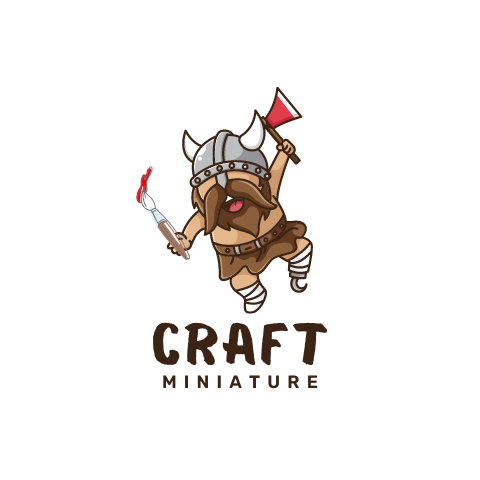When it comes to miniatures, there are three main types: metal, plastic, and resin. In this article, we will review metal and plastic miniatures. Both have distinct benefits and drawbacks that you must be aware of before purchasing. This article will discuss the critical differences between metal and plastic miniatures to decide which type is right for you.
This article will explore the key differences between metal and plastic miniatures so that you can decide when you next pick up that model on your wish list.

The history of metal and plastic models
The first plastic models were created in the early 1900s, with the first metal models appearing soon after. Plastic models became more popular in the 1950s as they were cheaper to produce. Metal models began to decline in popularity in the 1960s as plastic models became more advanced.
As time progressed, plastic model production methods and moulding processes became more advanced, allowing the detail of plastic models to rival their metal counterparts. This was one of the main advantages that metal models had over plastic before improvements were made.
In the 1990s, there was a shift in metal model production to the use of pewter. This was away from the original use of predominantly lead. This was because of health concerns with lead poisoning. Pewter is a much safer metal to use for models.
Metal models have returned with the resurgence of interest in wargaming and board gaming in the early 2000s. Many companies now produce both metal and plastic models. However, some companies are trading metal models for alternatives such as resin production for shorter production runs.
What are the differences between metal and plastic miniatures?
Here are some key points to consider:
- Metal miniatures are typically more expensive than plastic miniatures.
- Metal miniatures are heavier and more durable than plastic miniatures.
- Plastic miniatures are more accessible to paint than metal miniatures.
- Plastic miniatures are typically lighter in weight.
Metal Miniatures
What are metal miniatures, and what are they used for?
Metal miniatures are heavier and more durable than plastic miniatures. They are also typically more expensive. Metal miniatures are popular among war gamers and collectors because of their weight and durability.

Metal miniatures are figurines from a composition of metals consisting mainly of pewter but can include zinc and lead. They can be used for various purposes, such as collector items, figures in board games, or models in war games. Metal miniatures are less common than plastic miniatures and are usually more expensive than their plastic counterparts.
What are the benefits of metal miniatures?
We have listed some of the benefits of metal miniatures in the below list:
- They are heavier and more durable – this is one of the most significant advantages of metal miniatures over plastic. They can withstand more wear and tear and are less likely to break.
- They have a more premium feel – metal miniatures have weight and solidity that plastic models cannot match. This makes them feel more valuable and luxurious.
- Metal models are easier to strip off paint – if you buy second-hand models or want a new paint job, metal miniatures are easier to strip off the paint. You can even use nail polish remover on these minis without impact on the figurine.
What are the drawbacks of metal miniatures?
The drawbacks of metal miniatures include:
- They can be more expensive – this is one of the most significant disadvantages. Some metal miniatures can cost several times more than their plastic counterparts.
- They can be challenging to paint – the details on metal miniatures can be more difficult to paint than on plastic. This is because the smooth surface of the metal can make it challenging to adhere paint to the model.
- They can be challenging to assemble – the pieces of metal miniatures can be more difficult to fit together than plastic. This is because the parts are often smaller and more delicate.
- Difficult to modify once set – unlike plastic, metal components are harder to remove and adjust once set, unlike plastic that you can use clippers on.
- Paint can chip and crack – we have all been there when you drop a metal model, and the paint seems to fall away from the model.
The famous problem with gluing metal miniatures
As metal is not porous, constructing metal miniatures can become problematic. Plastic models can easily stick together where the glue is designed to melt the plastic. Unfortunately, this is not the case with metal miniatures, where you must add some techniques to get your model to stick. You can do this by either using the pinning method for heavier metal components or making abrasions on the surface.
The pinning method
This is where you add a small metal rod into the pieces you are gluing together to give it added support. The most significant advantage of this method is that it provides a much stronger bond than glue alone. This will also remove the stress and load on the main components of the model that, if not applied, could lead to the pieces falling off.
Creating abrasions in the surface
This is where you use a file or hobby knife to make minor scratches on the surface of the metal. This will give the glue something to grip onto and create a stronger bond.
Plastic Miniatures
What are plastic miniatures, and what are they used for?
Plastic miniatures are less expensive and easier to paint than metal miniatures. They are also typically lighter in weight. Plastic models are popular among hobbyists because of their price and ease of painting.
Plastic miniatures are figurines made from plastics such as polystyrene. They can be used for various purposes, such as collector items, figures in board games, or models in war games. Plastic miniatures are more common than metal miniatures and are usually less expensive than their metal counterparts.
What are the benefits of plastic miniatures?
We have listed some of the benefits of plastic miniatures in the below list:
- They are typically less expensive – this is one of the most significant advantages of plastic miniatures over metal. They can be mass-produced at a lower cost, making them more affordable.
- They are easier to paint – the smooth surface of plastic miniatures makes them easier to paint than metal. This is because the paint can more easily adhere to the model.
- They are typically lighter in weight – this is another advantage of plastic over metal. Plastic models are often more lightweight and easier to transport.
- Easier to modify if mistakes are made – unlike metal, plastic components can be removed and adjusted if necessary. This makes them more user-friendly for hobbyists.
- Not as easily damaged – plastic models favor those that often drop their miniatures.
- Paint is less likely to become chipped or crack – another advantage plastic has over metal.
What are the drawbacks of plastic miniatures?
The drawbacks of plastic miniatures include:
- They can be less durable – this is one of the most significant disadvantages of plastic miniatures.
- They feel less premium – plastic models often lack the weight and solidity of metal models. This can make them feel less valuable.
So, which is better? Metal or plastic?
The answer to this question depends on your needs and preferences. Metal miniatures are wanted if you want a more durable and premium product. However, if you want an affordable and user-friendly option, plastic models are wanted. It is ultimately up to you to decide which type of miniature is right for you.
Final thoughts
Both metal and plastic miniatures have their pros and cons. It is essential to weigh your needs and preferences before deciding which type of miniature is right for you. Thanks for reading! We hope this article has helped you understand the differences between metal and plastic miniatures.
If you want to learn more about the differences between plastic and resin models you can check out our article comparing the two model types.


